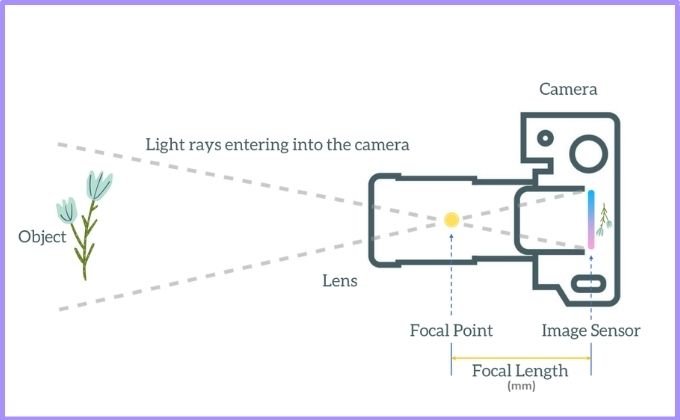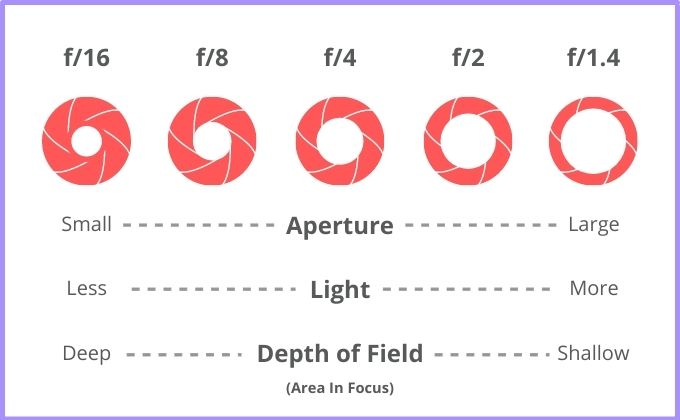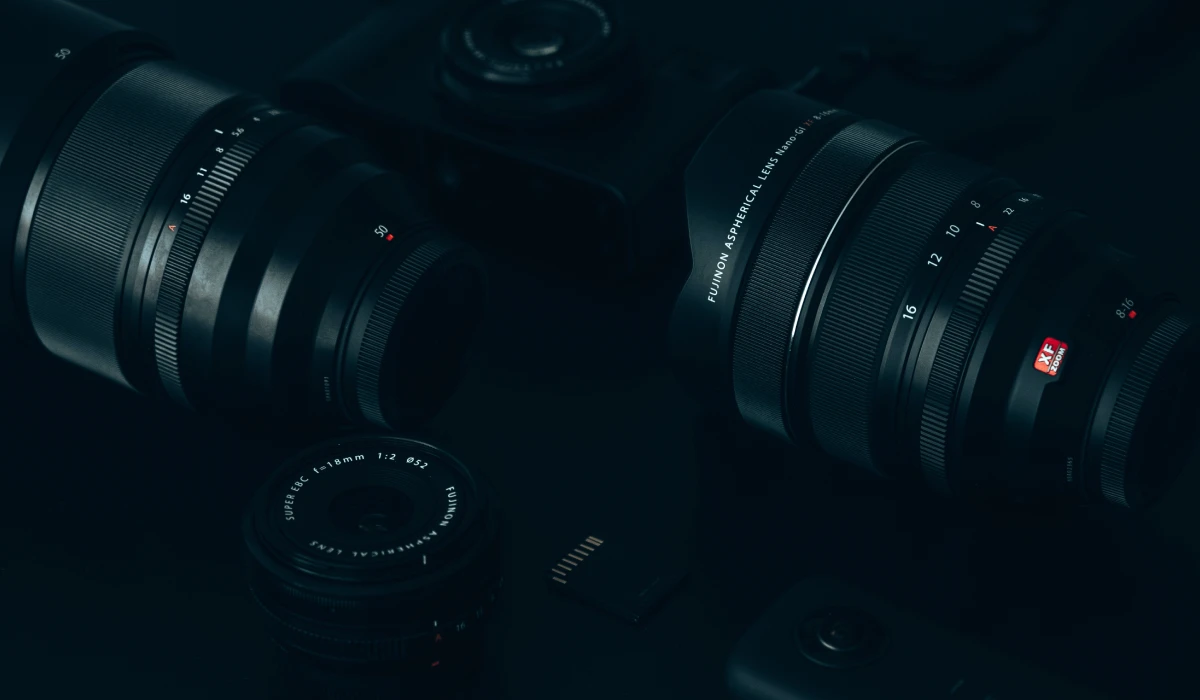Introduction
Good lenses are essential for successful pictures. The lens also determines the quality and look of the images. It is the camera’s light-collecting optical system that creates an exact image of a subject. In addition to the intended use, there are two main criteria that you should pay attention to when choosing the right DSLR camera lenses: the focal length and the aperture.
When choosing Digital DSLR cameras, you should pay attention to which brand you are going for. While the essential technology is built into the housing at Nikon, for example at Canon it is in the lens. It is also important to ensure that not every lens fits every camera, as there are brand-specific connections.
Two Main Criteria For Choosing The Right DSLR Camera Lens
The Focal Length

When choosing the lens, you have to choose between a fixed focal length or a zoom-capable lens.
The advantage of fixed focal length lenses is their more compact design, while zoom lenses can be used for more flexibly. Especially those who want to be prepared for all eventualities when traveling will find the optimal equipment. Zoom lenses are also better suited for amateur photographers who do not want to invest in a large number of different lenses. Even if the flexibility of a fixed focal length lens is less, these lenses convince in return with more brilliant and sharper images.
The focal length is a defined, unchangeable property of the lens. The different sensor sizes of the cameras provide the so-called crop factor. Depending on the size of the sensor, the recorded image section changes when using the same lens. The image sensor of many common Digital SLR Cameras in APS-C format is smaller by a factor of 1.5 (Canon) to 1.6 (Nikon) than the small format 24 mm × 36 mm (full format). A lens with a 50 mm focal length on an APS-C camera thus acts like a lens with an 80 mm focal length on a full-frame camera. In practice, however, this is less relevant for most amateur photographers, as the crop factor is only meaningful about the 35mm format and it ultimately depends on what experiences you have had with your camera.
The Aperture

With the help of the aperture, which can be used to regulate the width of the lens, the amount of light that should fall through the opening on the lens is determined.
The ratio of the focal length to the aperture opening width is called the aperture value, which is characterized either by 1 / x or f / x. The larger the number x under the fraction line, the less light falls through the aperture onto the sensor. A closed aperture is often used here. If the value “x” below the fraction line is small, the aperture value is high. In this case, the shutter is open, which allows a lot of light to fall on the camera’s sensor.
In addition to the f-number, the term f-number is also often used. The f-number is the single value “x” without the fraction line. If the term f-number is used, the previously mentioned rule is reversed. A closed aperture is referred to as a large f-number and an open aperture is a small f-number.
The aperture not only regulates the amount of light that falls on the sensor, but also the size of the sharp area in an image. With a large aperture value, such as f / 1.8, the sharp area is small and there is a lot of background blur. If a picture is to be fully focused, a small aperture value of, for example, f / 16 and smaller is required.
If the maximum opening of a lens is related to the focal length, one obtains the light intensity of a lens, which is also a quality feature for a lens.
Types Of DSLR Camera Lenses
1. Wide-Angle Lenses For Sensational Panoramic Images
Wide-angle lenses are available in various sizes and with or without a lens hood. But they can all do one thing: take great photos without running out of space. The photographer benefits from the wide-angle especially for landscape photography, architecture photos, group photos, and indoor photos. The interplay of different DSLR Camera Lenses enables a focal length of 16-35 mm and a large depth of field despite the large aperture. This can be used as a design tool, for example, to emphasize the foreground with the effect that the background is far away. The combination of this effect with the large angle of view leads to the recording of great panoramas.
- Focal length: Wide-angle under 50 mm, super wide-angle under 20 mm
- Depth of Field: Large, even at a low f-number
- Suitable for: Large image sections, panorama shots, landscape shots, or real estate photography
- Tips: The Good DSLR Camera for Beginners should be held as level as possible, so a tripod is recommended.
- Pro: Enables large image sections with a large depth of field.
- Cons: Subjects that are outside the center of the image are displayed more distorted in wide-angle than with a standard focal length of 50 mm. Therefore, wide-angle lenses are not suitable for portraits.
2. Macro Lenses For Successful Close-Ups
If you want to photograph food, flowers, small animals, or insects, a macro lens is suitable. Fascinating close-ups are possible thanks to a reproduction ratio of 1: 2 or 1: 1. Even if macro lenses are a little heavier in comparison, such a lens is recommended to every nature photographer. After all, it is said that anyone who has once photographed with a macro lens will find it difficult not to do so anymore.
Those who rarely take macro photos do not need to buy an expensive extra lens, because the standard lens can be tuned for macro photos with a close-up lens or an inverted or intermediate ring.
Since the exposure time with macro lenses is longer than with other lenses and small animals flee before the picture is taken, it is also possible to choose a telephoto macro lens. Telephoto lenses are spoken of with a focal length over 50 mm. When using a lens with a focal length of 100 mm, it is possible to choose a greater distance to the subject without losing the desired image properties.
- Focal length: 60-200 mm
- Depth of field: Low with a small f-number
- Suitable for: Nature photography, plant photography, insect photography
- Tips: Always observe the close-up limit indicated on the lens. This value indicates the minimum distance between the object and the lens.
- Pro: Offers the best imaging properties in the close-up range. This allows the motifs to be better released.
- Cons: The lenses only have a low light intensity and sharp images are usually only possible when the distance to the photo object is short.
3. Standard Lenses
A standard lens is an optimal starter lens with all important focal lengths for most purposes. Most of them have an aperture that can be continuously adjusted using the aperture ring and focus ring, which means that various sharpness settings are possible. Whether photos in nature or while traveling, a standard lens can be used flexibly for most purposes thanks to a widely ranged focal length of 18-55 mm and the feed of the sensor and the converging lens. Safely stowed, the lens can be easily taken anywhere and at the right moment, it is quickly pulled out.
- Focal length: 18-55 mm
- Suitable for: Everyday situations, nature photography, travel photography
- Pro: The lenses are easy to transport, suitable for almost all subjects and offer very flexible setting options.
- Cons: No close-ups from a long distance possible.
4. Fixed Focal Lengths As Portrait Lenses
Portrait lenses usually have a fixed focal length, which prevents image distortion, which is an advantage with some other lenses but is not desired here. Due to the fixed focal length, the image section changes solely due to the distance between the lens and the subject. Here, too, the sharp area of the image is determined by the opening of the aperture. Due to their design, fixed focal lengths can often score with larger aperture values, which means that they are usually more bright.
Also, such a lens is usually cheaper, more powerful, and delivers particularly sharp images. For example, for a camera with a crop factor of 1.5 or 1.6, a 50 mm lens can be used as an “all-rounder” for most areas, as it does not contain any image-specific distortion. 80 – 85 mm fixed focal length lenses are also popular in portrait photography. A fixed focal length of 70-105 mm is recommended for full-frame cameras.
- Focal length: Between 50 and 105 mm. However, there are wide range of Prime lens available
- Wide-angle prime lenses like 14mm and 20mm.
- Medium and long range telephoto prime lenses like a 300mm or 600mm lens.
- Suitable for: Portrait photography
- Pro: Capturing brilliant, sharp images.
- Cons: Due to the lack of a zoom function, they are very inflexible in their use.
5. Telephoto Lenses
The larger the focal length of an objective, the greater the possible magnification of the object to be photographed. This is exactly the purpose of the telephoto lens. With its long focal length and shallow depth of field, objects that are far away, such as during sports or in nature, can be captured very well. This enables precisely defined image sections and high image quality despite the great distance.
- Focal length: 150 – 1300 mm
- Depth of field: Shallow depth of field
- Suitable for: Sports photography, concert photography, nature photography, travel photography
- Tips: Using a tripod, the image section is kept steady and thus enables a sharp result.
- Pro: Offers outstanding overcoming of distances to the subject to be photographed.
- Cons: Due to their size, they are relatively unwieldy and heavy.
6. Fish Eye Lenses
Fish Eye lenses produces a wide panoramic or hemispherical image.
- Focal Length: 8 – 15 mm
- Suitable for: Panorama, hemispherical photo, artistic and creative photography
- Pro: Produces wide field of view.
- Con: Wide field of view with a lot of distortion.
Conclusion
Not all lenses are created equal. What is a matter of course for seasoned hobby photographers and professionals, surprises newcomers again and again: Lenses often cost more than the camera itself. It quickly becomes clear that every lens has its special purpose. If you want to take photos from far away, a telephoto lens is a right choice, but if the subject is close, a macro lens is recommended. If you want to capture large landscapes, the wide-angle lens is the best choice. When taking pictures of people, a fixed focal length lens with a focal length between 50 and 105 mm, depending on the size of the camera sensor, delivers a promising result.








